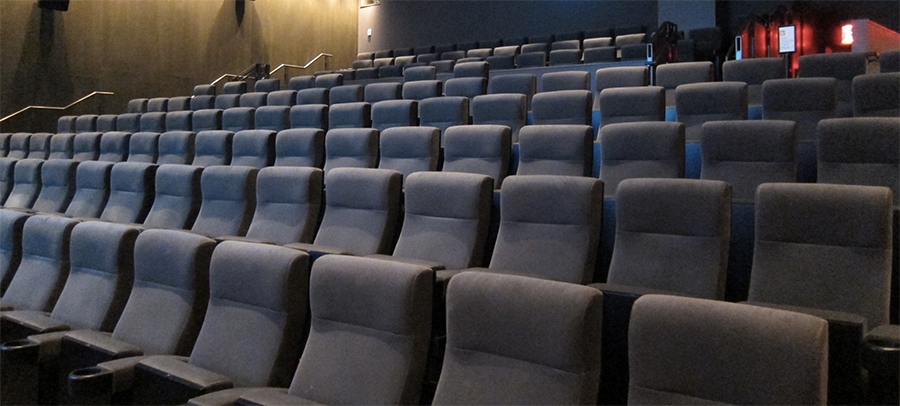3D, Smell-O-Vision & Indoor Weather: Rating The Best & Worst Movie Theater Innovations Image courtesy of (Mike Mozart)
Summer blockbuster season is almost upon us. The months of kicking back in the full-blast air conditioning and watching digitally-created stuff blow up will begin in just a couple of weeks, and at this point, it’s an annual ritual.
But air conditioning was not always with us. At one point, it became a big new feature movie theaters used to entice customers through their doors. Movie theaters (and the studios that make the movies) have tried a lot of things to entice customers through those doors. Some were brilliant, and changed cinema history. Some were complete duds that it’s hard to believe anyone wasted a penny on.
And so, from passing fads to worldwide game-changers, here are some of the gimmicks and innovations we’ve seen in a century of going to the movies.
1909: 35MM FILM
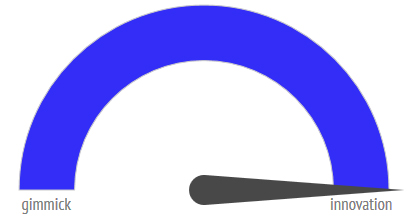 Various gauges of film were in use from the dawn of cinema, but one single type of 35mm film became standard at around this point. That standardization was a big boost to the distribution and exhibition end of things: any projector, owned by any exhibitor, had the technical facility to display anyone’s movie. That let movies travel nationwide and worldwide with comparative ease.
Various gauges of film were in use from the dawn of cinema, but one single type of 35mm film became standard at around this point. That standardization was a big boost to the distribution and exhibition end of things: any projector, owned by any exhibitor, had the technical facility to display anyone’s movie. That let movies travel nationwide and worldwide with comparative ease.
VERDICT: 100% innovation. Essential to the early spread of the medium, and not superseded until over 100 years later.
1913: TRAILERS/PREVIEWS
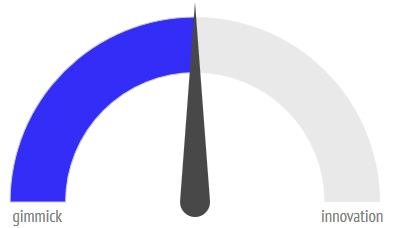 The ubiquitous 30 minutes of highly-measured, carefully-crafted, green- and red-band trailers before any movie wouldn’t show up for decades to come, but one enterprising advertising manager for Loew’s had the bright idea to splice together some promotional material for an advertisement to run with film in 1913. By 1916 the studios were making their own, and the National Screen Service took over the trailer biz in 1920.
The ubiquitous 30 minutes of highly-measured, carefully-crafted, green- and red-band trailers before any movie wouldn’t show up for decades to come, but one enterprising advertising manager for Loew’s had the bright idea to splice together some promotional material for an advertisement to run with film in 1913. By 1916 the studios were making their own, and the National Screen Service took over the trailer biz in 1920.
VERDICT: Could go either way. Audiences don’t actually need trailers for the movie theater experience, but for better or worse the advent of previews changed marketing and cultural consumption of media forever after.
1922: STADIUM SEATING
 Why it took 75 years after this invention for the idea to take off we will never understand. Stadium seating is an elegant solution to the unavoidable problem of the tallest person in the theater always managing to sit right in front of you. Craning your neck just to see anything below the top third of the screen is no fun for anyone.
Why it took 75 years after this invention for the idea to take off we will never understand. Stadium seating is an elegant solution to the unavoidable problem of the tallest person in the theater always managing to sit right in front of you. Craning your neck just to see anything below the top third of the screen is no fun for anyone.
The first movie theater to have stadium seating in the auditorium was the Princess Theatre in Honolulu, all the way back in 1922. IMAX theaters and some palace theaters adopted the technique over the following decades but it didn’t become ubiquitous in the modern multiplex until the late 1990s-early 2000s.
VERDICT: Totally an innovation. A small change to floor plan that makes the viewing experience approximately ten zillion percent more comfortable for the viewer.
1927: SOUND
 The Jazz Singer, released in 1927, is very famously the first full feature film to have been a “talkie.” (Though it employed “live” recorded ambient audio, dialogue, and music only in selected scenes, and not throughout.) The film was a smashing hit, and Warner Brothers and the other studios sensibly followed the money.
The Jazz Singer, released in 1927, is very famously the first full feature film to have been a “talkie.” (Though it employed “live” recorded ambient audio, dialogue, and music only in selected scenes, and not throughout.) The film was a smashing hit, and Warner Brothers and the other studios sensibly followed the money.
Not all film before this point was completely silent (there were accompanying scores and effects), but recording and synchronizing not only music and sound effects but also dialogue on the actual film, in such a way that it played back both audibly and correctly with the images, was a huge innovation. Fitting theaters nationwide with sound systems took years, but the films stopped being recorded as only silent in 1929.
VERDICT: 100% innovation. Silent film as a medium and art form has been all but dead for decades.
1930s: CONCESSIONS
 Patrons have brought snacks into the movies since before the advent of the first nickelodeon.
Patrons have brought snacks into the movies since before the advent of the first nickelodeon.

(Steve)
But it took until the Great Depression for theaters to stop fighting it and instead to realize they, instead of an unaffiliated stand outside, could be the ones profiting from popcorn sales. And boy do they ever profit. In 2009, researchers estimated that 20% of theater revenue, and 40% of theater profit, comes from our urge to munch while we watch.
VERDICT: Mixed bag. On the one hand, snacks have kept cinemas afloat in hard times. And on the other hand, $8 for a soda? Are you freaking kidding me?
1934: TECHNICOLOR; 1952: EASTMANCOLOR
 Color film did not spring into being with Gone With The Wind or Snow White And The Seven Dwarfs. The first color films date all the way back to 1902. But those were colored, developed, or projected with laborious, intensive processes. Technicolor introduced a three-strip process in 1932 that was expensive and bulky, but easy to record in and project back. And so the color film era was born.
Color film did not spring into being with Gone With The Wind or Snow White And The Seven Dwarfs. The first color films date all the way back to 1902. But those were colored, developed, or projected with laborious, intensive processes. Technicolor introduced a three-strip process in 1932 that was expensive and bulky, but easy to record in and project back. And so the color film era was born.
In 1952, Kodak came along with a cheaper, easier process: high-quality color 35mm film. Studios could process it in-house in their own facilities without having to spend time and money on Technicolor’s processes. Eastmancolor became dominant in Hollywood, and so did movies in color.
VERDICT: Innovations, both. Black-and-white film still exists as an artistic choice but color, in movies and still photography, has long since become our dominant visual language.
1933: DRIVE-IN THEATERS
 Nothing quite evokes nostalgia for the imagined golden-tinted 1950s like the image of a drive-in theater. Americans’ love affair with cars, plus Hollywood and the joy of the B-movie — what’s not to love? The first drive-in opened in New Jersey in 1933. At their peak, in the late 1950s and early ’60s, there were more than 4000 drive-ins across the country — an estimated quarter of all movie screens. By 2013, there were 368 drive-ins left.
Nothing quite evokes nostalgia for the imagined golden-tinted 1950s like the image of a drive-in theater. Americans’ love affair with cars, plus Hollywood and the joy of the B-movie — what’s not to love? The first drive-in opened in New Jersey in 1933. At their peak, in the late 1950s and early ’60s, there were more than 4000 drive-ins across the country — an estimated quarter of all movie screens. By 2013, there were 368 drive-ins left.
VERDICT: More gimmick than innovation. Drive-ins have a very specific cultural cachet and sense of nostalgia attached, but they didn’t really add all that much to the film exhibition or viewing experience. They did, however, guarantee make-out spots for hundreds of thousands of teenagers.
1940: SURROUND SOUND
 At this point, sound is half the reason you go to the theater. That star destroyer comes in from overhead, or bullets whiz around you on left and right. Dialogue moves with characters, as they wander around a room. We have Disney to thank for bringing it to the movies: the first feature film to use surround sound was 1940’s symphonic extravaganza Fantasia.
At this point, sound is half the reason you go to the theater. That star destroyer comes in from overhead, or bullets whiz around you on left and right. Dialogue moves with characters, as they wander around a room. We have Disney to thank for bringing it to the movies: the first feature film to use surround sound was 1940’s symphonic extravaganza Fantasia.
VERDICT: Completely innovative. At this point, millions of us even have 5.1 or 7.1 surround sound setups in our own living rooms.
1952: CINERAMA
 Before there was IMAX, there was Cinerama. The technology used multiple projection points and an incredibly wide, curved screen to create a massive sense of spectacle and immersion. The most famous Cinerama flick is no doubt Stanley Kubrick’s 1968 2001: A Space Odyssey, which used the large format to make the spectator feel the sheer size of space. However, Cinerama’s three-projector setup was just a colossal pain in the butt for exhibitors and so it faded as other formats rose.
Before there was IMAX, there was Cinerama. The technology used multiple projection points and an incredibly wide, curved screen to create a massive sense of spectacle and immersion. The most famous Cinerama flick is no doubt Stanley Kubrick’s 1968 2001: A Space Odyssey, which used the large format to make the spectator feel the sheer size of space. However, Cinerama’s three-projector setup was just a colossal pain in the butt for exhibitors and so it faded as other formats rose.
VERDICT: Innovative in the artistic sense, but utlimately failed in the face of less expensive, less cumbersome large-format options.
1952: STEREOSCOPIC 3D
 3D viewing actually goes well back into the 19th century — many Civil War photographs were meant to be viewed stereoscopically. But achieving that same effect in film viewing is… a little more complicated.
3D viewing actually goes well back into the 19th century — many Civil War photographs were meant to be viewed stereoscopically. But achieving that same effect in film viewing is… a little more complicated.
The first main go, in the famous era of the red/green cardboard glasses, took off in 1952 with the release of the first full 3D feature film, Bwana Devil. The craze lasted until roughly 1954, when movie studios got tired of how expensive it was and movie theaters got tired of what a pain in the butt it was to keep two simultaneous film strips 100% synchronized. Additionally, other formats — like anamorphic widescreen — were coming into use and proving more popular.
VERDICT: Totally a gimmick. 3D at the time really didn’t add much to the movies, either artistically or commercially. Despite Hitchcock’s Dial M for Murder.
1960: SMELL-O-VISION
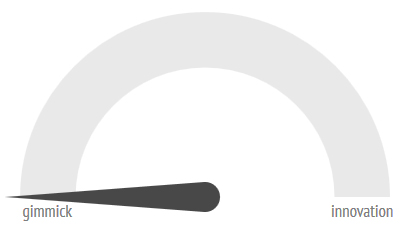 In the history of gimmicks, the gimmickiest might be Smell-O-Vision. The system of piping in scents to the theater at key points in the film didn’t even last long enough to become a passing fad. Exactly one movie had its smell score appended to its soundtrack: 1960’s Scent of Mystery which was, apparently, about as great as you’d think.
In the history of gimmicks, the gimmickiest might be Smell-O-Vision. The system of piping in scents to the theater at key points in the film didn’t even last long enough to become a passing fad. Exactly one movie had its smell score appended to its soundtrack: 1960’s Scent of Mystery which was, apparently, about as great as you’d think.
VERDICT: Why anyone thought this was a good idea remains lost to the mists of time. The movie flopped, and so did Smell-O-Vision.
1963: MULTIPLEXES
 Movie theaters have a dozen or two screens simultaneously showing a whole bunch of different films. By 2015, it’s basically the law of the land. All our theaters, except sometimes the art houses, work that way. But it was not always so. In the evolution from vaudeville through nickelodeons to movie palaces and drive-ins, the idea of showing a whole bunch of stuff at once in multiple, isolated theaters took a while to show up. (And the scratch to buy multiple projectors and put in some soundproofing between the rooms.)
Movie theaters have a dozen or two screens simultaneously showing a whole bunch of different films. By 2015, it’s basically the law of the land. All our theaters, except sometimes the art houses, work that way. But it was not always so. In the evolution from vaudeville through nickelodeons to movie palaces and drive-ins, the idea of showing a whole bunch of stuff at once in multiple, isolated theaters took a while to show up. (And the scratch to buy multiple projectors and put in some soundproofing between the rooms.)
Canadians came up with the idea a few years earlier, but the first multi-screen movie theater in the U.S. opened in 1963 in Kansas City. It was an AMC.
VERDICT: Innovative. It allowed theater operators to double their revenues without doubling their costs, and it allows many, many more people to partake a movie of an evening — as long as they don’t all want to see the same one.
1968: CONTENT RATINGS
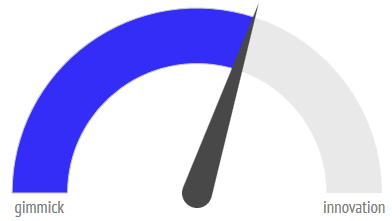 G, PG, PG-13, R, and NC-17: we all know the current version of the rating system, and we know what it’s theoretically supposed to signal. Rating a movie doesn’t change the experience of seeing it, exactly, but it does change the experience of what you even can see in the first place. And having a strict rating system in place has a strong effect, over time, of what content you see in those movies that you may or may not be allowed to buy tickets to.
G, PG, PG-13, R, and NC-17: we all know the current version of the rating system, and we know what it’s theoretically supposed to signal. Rating a movie doesn’t change the experience of seeing it, exactly, but it does change the experience of what you even can see in the first place. And having a strict rating system in place has a strong effect, over time, of what content you see in those movies that you may or may not be allowed to buy tickets to.
The MPAA’s 1968 “voluntary” system, which launched with ratings G, M, R, and X, was able finally to end the odious Hays Code. The Code prohibited not only sex, violence, and profanity but also “miscegenation,” “ridicule of the clergy,” and “white slavery,” (but not any other slavery) among other things, from being depicted in film.
VERDICT: More innovative than you’d think. Although the MPAA rating system has plenty of problems, it’s entirely preferable to what came before and improved the breadth and maturity content Hollywood was willing and able to put on the silver screen.
1970: STEREOSCOPIC 3D (AGAIN)
 A new 3D process, called “Stereovision,” was developed in 1970 and used through the early 1980s. The tech allowed both images to be recorded on a single strip of 35mm film and then separated again for viewing.
A new 3D process, called “Stereovision,” was developed in 1970 and used through the early 1980s. The tech allowed both images to be recorded on a single strip of 35mm film and then separated again for viewing.
If you never heard of it, that’s because it was not exactly used for major blockbusters but instead for B-movies and for porn. Several 1950s-era classics were also re-released in theaters on 3D in the 1970s and 1980s but big new 3D blockbusters — or at least, successful ones — were thin on the ground.
VERDICT: Still pretty gimmicky. 3D ebbed and flowed ever since its invention but its second big ‘resurgence’ wasn’t that much more impressive than the first go.
1971: IMAX
 If you’re talking large-format, you’re talking IMAX. The film on which IMAX is shot is literally four times the size of your standard 35mm film.
If you’re talking large-format, you’re talking IMAX. The film on which IMAX is shot is literally four times the size of your standard 35mm film.
The cameras are enormous, expensive, and finicky. The film reels are so huge that they are difficult to transport (or to lift) and the projectors, and their bulbs, can cause significant injury. But the film looks, bluntly, gorgeous. And big. Really big. And so IMAX — with and without 3D — has become ubiquitous for science and nature displays in museums.
There has been an expansion of IMAX to commercial film (directors Christopher Nolan and JJ Abrams are particular fans) in recent years, particularly since the release of a digital projector in 2008. However, most of the new multiplex “IMAX” screens are smaller than the original spec, and digital projection may not be in as high resolution.
VERDICT: More gimmicky than not, alas. Makes tremendously good-looking films for museums and for some sequences in action blockbusters but most people wouldn’t notice if it vanished, particularly with modern improvements in ultra high-resolution digital shooting.
1974: SENSURROUND
 The idea behind Sensurround is pretty simple: up the super low-frequency bass in the soundtrack, so that audiences feel a rumble at key moments. In theory, it adds to the experience in a way not quite unlike a rumble pack in a modern video game console controller.
The idea behind Sensurround is pretty simple: up the super low-frequency bass in the soundtrack, so that audiences feel a rumble at key moments. In theory, it adds to the experience in a way not quite unlike a rumble pack in a modern video game console controller.
In practice, though, it was a mess. Sensurround launched with 1974’s disaster flick Earthquake, and was only used in a tiny handful of films thereafter. The speakers were expensive to install, audience members reported the occasional headache and nausea, and the soundproofing (and plastering!) in multiplexes wasn’t good enough to withstand the vibrations. By 1977, Star Wars was beating the box office pants off of Sensurround “event films” and the tech dropped dead in 1978.
VERDICT: Not as bad an idea as Smell-O-Vision, but a gimmick doomed for the dustbin of history. Later technologies would do a better job of adding motion sensory experiences.
1987: MOTION SIMULATORS
 Your seat rocks, zooms, swishes, and vibrates with the specially-projected film. You’re in a DeLorean, a Federation shuttlecraft, a rickety old rustbucket being driven by a droid even less sensical than R2-D2. It is a motion simulator ride, and you are probably at a Disney or Universal property or, somewhat inexplicably, a prominent regional furniture store in Massachusetts in the 1990s. [Ed.: the author’s inner 12-year-old would like to add that the MOM ride at Jordan’s Furniture was actually pretty fun.]
Your seat rocks, zooms, swishes, and vibrates with the specially-projected film. You’re in a DeLorean, a Federation shuttlecraft, a rickety old rustbucket being driven by a droid even less sensical than R2-D2. It is a motion simulator ride, and you are probably at a Disney or Universal property or, somewhat inexplicably, a prominent regional furniture store in Massachusetts in the 1990s. [Ed.: the author’s inner 12-year-old would like to add that the MOM ride at Jordan’s Furniture was actually pretty fun.]
Been on Star Tours? Then you’ve been on the oldest one of these in the United States, which opened at Disneyland in 1987.
VERDICT: A complete gimmick fit only for amusement parks — more ride than movie — and yet somehow still not as dumb and idea as Smell-O-Vision. Some modern “4D” theaters are being fitted for motion but it seems unlikely to go big.
1997: LUXURY THEATERS
 This thing happened in the early ’80s that was super bad for movie theaters: VHS. DVD made it worse, and streaming services are just another nail in the coffin… or could be. Enter the luxury theater.
This thing happened in the early ’80s that was super bad for movie theaters: VHS. DVD made it worse, and streaming services are just another nail in the coffin… or could be. Enter the luxury theater.
“But wait,” you say. “Weren’t there movie palaces in the 30s?” Yes, and they were opulent and lovely. But you could not order a beer, a cheeseburger, and a freshly-baked chocolate chip cookie from your seat without taking your eyes off the screen, which you totally can at the Alamo Drafthouse.
There are a lot of variations on the luxury theater springing up all over. Alamo famously has a very strong etiquette code, in addition to a pretty good bar menu. Local theaters and regional chains that serve food and drink — sometimes in renovated, 80-year-old movie palaces — are all around. And reserved seating, massive recliners, and other amenities are starting to show up in specialized chains as well as in special areas of multiplexes.
VERDICT: Extra points for effectiveness. Beer, burgers, reserved seats, and a strict no-phones policy aren’t exactly innovative overall, but they are a good way to win back patrons who otherwise would just stay home and wait for Netflix.
1999: DIGITAL PROJECTION
 DLP was invented in 1998, but became talked about a year later when George Lucas announced that the first Star Wars movie in almost 20 years (sigh) would be shown digitally… in New York and L.A., anyway.
DLP was invented in 1998, but became talked about a year later when George Lucas announced that the first Star Wars movie in almost 20 years (sigh) would be shown digitally… in New York and L.A., anyway.
The industry came to a consensus on digital projection standards in 2004 and after that it took off. By September of 2013, 85% of the movie theaters in the United States had converted to digital. The projectors cost six figures (presenting challenges for indie theaters and art houses), but the films themselves are significantly cheaper and not subject to wear, tear, or transportation costs.
In short, yours truly sometimes misses the grain and texture (the aura) of real 35mm as much as the next nerd with a degree in this stuff, but let’s be real: DLP is cheaper, easier, and basically in all ways better for multiplex blockbuster viewing than celluloid is. It’s easier to store, to transmit, and to project. It doesn’t degrade after a thousand viewings, there are no reels to lose, and servers — not spindles — are the wave not so much of the future as of the present.
VERDICT: The biggest innovation in projection in decades, perhaps a century.
2003: STEREOSCOPIC 3D (AGAIN AGAIN)
 3D is the holy grail Hollywood just can’t let go of. The modern version hit it big when James Cameron took his Titanic money to build a fancy new camera for an underwater documentary in ’03, followed by the release of The Polar Express — the first 3D computer animated film — a year later.
3D is the holy grail Hollywood just can’t let go of. The modern version hit it big when James Cameron took his Titanic money to build a fancy new camera for an underwater documentary in ’03, followed by the release of The Polar Express — the first 3D computer animated film — a year later.
This time, it seems to be sticking. The glasses work better than they used to, and computer animation lends itself well to a 3D experience. Digital projection also makes it significantly easier to project than any of the film-based solutions were.
A large percentage of each year’s animated and action features come out in both 3D and “flat” screenings, and 3D versions of those films tend to account for between 20% and 40% of revenue. But revenue is why 3D has such staying power this time around: a theater can charge a significant premium for tickets to 3D screenings, while the projection doesn’t actually cost them any more than the 2D version.
VERDICT: Still a gimmick, no matter how hard James Cameron, Peter Jackson, and Disney/Pixar try to convince us otherwise. But a lucrative gimmick, which gives it power.
2015: THE WEATHER / 4D
 Variety reports this month that the big new thing in movie theaters is real! live! simulated weather! right there in the auditorium.
Variety reports this month that the big new thing in movie theaters is real! live! simulated weather! right there in the auditorium.
CJ 4DPlex is adding “snow, rainstorm, and warm air” to its existing suite of in-theater effects, including “motion, water, fog, wind, air, lightning, bubbles, ticklers, scents and vibration.” If that combination of motion, Smell-O-Vision, Sensurround, and being poked sounds like something you sat through at Disney World in the last decade, it pretty much is. CJ 4DPlex is under the impression that American moviegoers are dying to have this experience appended to their 2015 summer action flicks, including the new Mad Max, Avengers, and Transformers films.
VERDICT: Call us cynical, but we smell Smell-O-Vision on this one.
Want more consumer news? Visit our parent organization, Consumer Reports, for the latest on scams, recalls, and other consumer issues.


